Despite vast forest loss, the Anjouan scops owl is holding on in the Comoros Islands
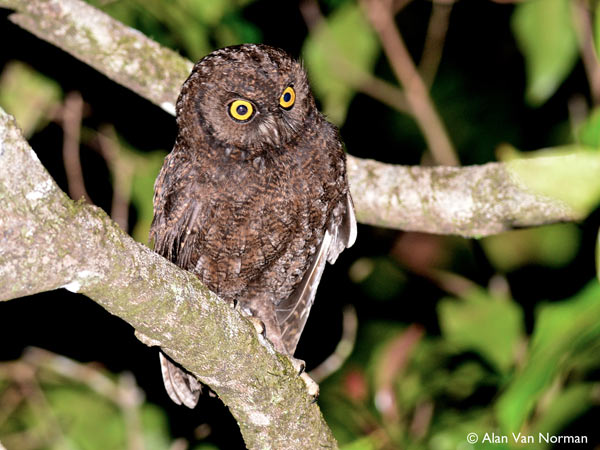
The Anjouan scops owl. Photo by: Alan Van Norman.
The Anjouan scops owl—an elusive owl found only on its tiny eponymous island—was once considered among the world’s most endangered owls, and even the most threatened birds. However, the first in-depth survey of the owls on the island finds that, in fact, the population is far larger than initially estimated. In a new paper in Bird Conservation International, scientists estimate that 3,500-5,500 owls survive today as opposed to an earlier estimate of just 200-400 birds.
“Our work doesn’t actually show that the owl is doing better than expected or that its status has improved, just that our knowledge of its status has improved,” said Hugh Doulton the technical director for the local conservation organization Dahari and co-author of the research. “This shows the danger of basing conservation assessments on rough and ready surveys, and perhaps a tendency to paint crisis situations for species without enough data to back up these assessments.”
The invisible owl
Still, the owl remains incredibly elusive. Although Doulton has lived and worked on Anjouan—a small island in the Comoros—for the past seven years, he’s never actually had had the pleasure of viewing the native owl.
“I go camping at the weekends from time to time and hear the owls whistling to each other, but, sadly, I’ve never seen one,” he told monagaby.com.
 Dahari ecological technician, Ishaka, looking for owls at dusk. Photo by: Dahari. |
Even the survey team did not depend on catching sight of the owls, but instead on listening for and recording their telltale whistles.
“The only way of surveying species like the scops owl is by counting individuals at night from their calls,” explained Doulton, who described the field work as incredibly challenging.
“[It] involved a lot of hard slogging up Anjouan’s knee-breakingly steep slopes, and camping in the forest. After dusk the team would head out with torches and set up observation points every 200 meter along a trail—it’s too steep and dangerous to stray off the paths. They stayed at each observation point for eight minutes, first listening passively then playing calls of a scops owl using an MP3. Any owls that were heard calling were recorded and an estimate made of their distance from the observation point.”
But the scientific pay-off was huge. Not only did the scientists determine that the Anjouan scops-owl’s population was more than ten times larger than previously estimated, but the team was also surprised to find owls in degraded forests and agroforestry landscapes.
“The previous estimate was…based on an assumption of the owls’ complete dependence on the little remaining natural forest, when our study shows relatively high encounter rates in areas of degraded forest and agroforestry,” Doulton explained. Finding the owls in degraded forests agroforests is very important, since Anjouan has little natural forest left.
Anjouan’s decimated forests

The deforested landscape of Anjouan. Photo by: Dahari.
Anjouan was once covered in lush tropical forests—as were the three islands of the Comoros—that is no longer the case.
“According to the FAO’s latest global forest resource assessment from 2010, the Comoros suffered from the highest rate of deforestation in the world between 2000 and 2010—9.3 percent per year. However, it’s difficult to validate these figures given the lack of data,” said Doulton.
To come up with a more accurate picture, the Bristol Conservation & Science Foundation released a report that relies on three sources of recent satellite data. Looking at Anjouan, which is smaller even than Barbados, the report found that only seven percent of the island is now covered by natural forests, meaning that the island has lost the vast majority of its historical forest.
The overall report broke down as follows: nearly 33 percent of Anjouan is agroforestry (13,825 hectares), 14 percent is degraded forests (5,913 hectares), and seven percent is natural forest (2,956 hectares).
Forest loss is still occurring. According to Global Forest Watch, Anjouan has lost 65 hectares of forest when looking at 75 percent of forest cover from 2001-2012. The number of lost forest rises to 88 hectares when looking at 10 percent forest cover. By comparing that to natural forest cover from the report, it represents about two to three percent of the island’s total.

Top left: Anjouan’s forests when looking at 75 percent tree cover courtesy of Global Forest Watch. Top right: Anjouan’s forest when looking at 10 percent tree cover, which probably picks up many of the agroforestry, degraded forests, and plantation landscapes courtesy of Global Forest Watch. Bottom left: the location of Anjouan between Africa and Madagascar. Bottom right: a satellite image of Anjouan. Click to enlarge.
“Whatever the figures are, it’s clear that there has been massive deforestation since the effective end of control on tree-cutting following decolonialisation in 1975,” said Doulton. “I’ve seen old photos of Anjouan’s landscape covered in old-growth forest, landscapes that are now dotted only with clove trees and agricultural plots.”
The drastic forest loss has also impacted rivers and agriculture across the island, creating major challengers for local communities.
“Around 30 of 45 previously permanent rivers now flow only during the rainy season, erosion of topsoil is continuous, and the subsequent loss of fertility has caused big decreases in agricultural yields,” said Doulton. “A study we commissioned by a hydro-geologist suggested that the reduction of water resources was in particular due to the loss of the moist forest in the highlands that added significantly to water retention because of the covering of mosses and lichens that traps water from mist.”
The forests of Anjouan are important, both for owls and people. Doulton noted that even though owls are present in plantations and degraded forests, they still depend on natural forests.
“It is clear that the little remaining natural forest is important to the owls. Owing to the lack of research into the ecology of the species, we can only speculate why this might be; likely factors include lower human disturbance and the presence of large native tree cavities for roosting.”
The researchers also found that even when owls were located in degraded habitats, they were often still close to natural forest.
Moving forward
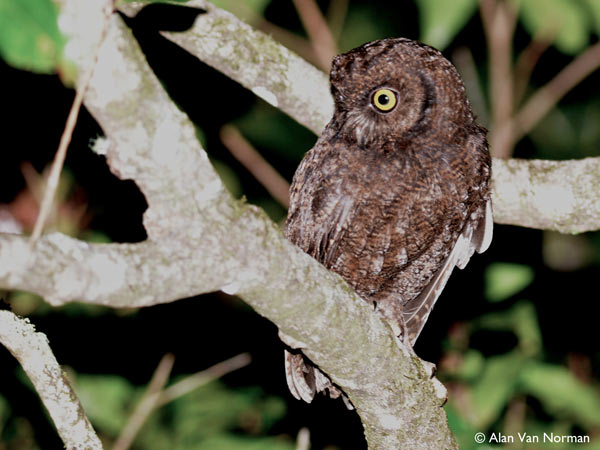
The Anjouan scops owl. Photo by: Alan Van Norman.
Although, the owl’s population is larger than initially feared, it is still threatened. In fact, the conservationists are now recommending that the Anjouan scops owl be moved on the IUCN Red List from Critically Endangered to Endangered. Conservation efforts will likely be necessary to keep the owl from vanishing.
“The most important conservation action is to preserve what remains of this habitat,” Doulton said. In order to achieve this, the organization has focused on intensive community conservation.
“As ever, this is a social rather than an ecological issue. The deforestation threatens not only the endemic biodiversity including the scops owl, but also the livelihoods of 90 percent of Anjouan’s population who are dependent on agriculture,” explained Doulton. “That’s why our approach to conservation at Dahari has been to first concentrate very heavily on the development needs of the local people. Without devising ways for them to generate enough food and revenues to live comfortably, pressure on remaining forest habitat will only increase and conservation measures will be ineffective. So we have spent much of the last seven years developing an agricultural development program that has so far benefitted over 2,500 farmers, bringing back fertility to lowland fields to reduce the need to cut new fields high up in the forest.”

Dahari technician, Faredil, explaining how to produce bio-insecticide with tobacco. Photo by: Dahari.
The local group, Dahari, supported in part by the Bristol Zoological Society and Durrell Wildlife Conservation Trust, is also beginning discussions with locals about setting aside some forests as protected areas.
“We’re just starting these conversations with the villagers now, concentrating first on areas of forest of direct importance to them, particularly areas that support water sources and rivers,” said Doulton. “These are the first ever attempts to put in place terrestrial conservation measures in the Comoros and the path ahead is not going to be easy—in part due to the extremely high pressure on forest, but also because of the lack of regulation mechanisms.”
Going forward, the team is also planning to conduct further study of the Anjouan scops owl, including looking at the species’ ecological needs and why it requires access to natural forest. They will also begin studying Livingstone’s fruit bat (Pteropus livingstonii), which is only found in the Comoros, on the islands of Anjouan and Moheli. The species is listed as Endangered with an estimated population of just 1,200 individuals in 2002.
“Because of the encouraging results of this study on the scops owl, our Dahari team is now focusing their initial ecology and conservation work on Livingstone’s fruit bat, as our earlier studies showed this species to be under high threat,” said Doulton.
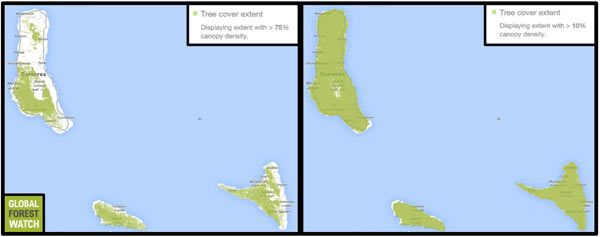
Left: the three main Comoros Islands (Moroni, Moheli, and Anjouan) showing tree cover at 75 percent. Right: tree cover at 10 percent across the three islands. Images courtesy of Global Forest Watch. Click to enlarge.

A pair of Anjouan scops-owl. Photo by: Charlie Marsh.

Dahari technician, Kais, conducting a training on potato harvesting. Photo by: Dahari.

Dahari technician, Inzou, training the village outreach agents. Photo by: Dahari.

Dahari technician, Inzou, teaching the villagers how to plant in regular lines. Photo by: Dahari.

Dahari technician, Siti, teaching composting techniques to villagers. Photo by: Dahari.

The Dahari team. Photo by: Dahari.
Citations:
- KATHLEEN E. GREEN, BRONWEN M. DANIEL, SAMUEL P. LLOYD, ISHAKA SAID, AMELAID
HOUMADI, DANIEL M. SALIM, SOUFIANI M’MADI, HUGH DOULTON and RICHARD P. YOUNG
Out of the darkness: the first comprehensive survey of the Critically Endangered Anjouan Scops
Owl Otus capnodes. Bird Conservation International, Available on CJO 2014 doi:10.1017/
S0959270914000185
Related articles

Forgotten Species: the haunting whistle of the Anjouan scops-owl
(12/03/2009) I know a two-year-old who is already an owl expert. My friends’ daughter, Harper, can identify all of North America’s owls by photos or drawings; even more impressive she can identify them by call. There is one owl call, however, that she may never hear. The Anjouan-scops owl, native to Anjouan island apart of the Comoros island chain, is on the verge of extinction. It is so rare that for over a century it was believed to have already vanished.
Old fishermen document declining range of the Indus River dolphin

(12/03/2014) The Indus River dolphin (Platanista gangetica minor) is an endangered freshwater mammal found only in the Indus River and tributaries draining the Himalayas. Since 1879, the dolphin—locally known as the bhulan—has vanished from 80 percent of its range. Now, a study using interviews with dozens of elders in the Pakistani fishing communities along the river documents when dolphins disappeared from different river sections.
Nano-tags track baby sea turtles during their first few hours

(12/03/2014) Baby sea turtles vanish after they scamper into the ocean. Years later, juvenile turtles may pop up thousands of kilometers away, but often scientists don’t see them again until they return to their birthplaces to nest on the beach. Now, using tiny tracking tags weighing no more than two watermelon seeds, a team has followed newborn loggerhead turtles during their first critical hours at sea, revealing how they evade predators and hitch rides on the ocean’s currents.
Rhino, cheetah win the world’s top camera trap photo contest
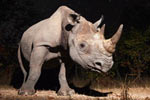
(12/02/2014) Two big—and endangered—mammals took 2014’s top prizes in the world’s biggest camera trap photo contest: a black rhino and a Asiatic cheetah. The gorgeous shot of a black rhino at night in Zambia photo won the overall photo competition, while the image of a super-rare Asiatic cheetah in Iran took the top research prize.
New calendar celebrates primates and raises money for their survival
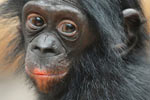
(11/26/2014) Humans, or Homo sapiens sapiens, are really just upright apes with big brains. We may have traded actual jungles for gleaming concrete and steel ones, but we are still primates, merely one member of an order consisting of sixteen families. We may have removed ourselves from our wilder beginnings, but our extant relatives—the world’s wonderful primates—serve as a gentle living reminder of those days.
Meet the world’s rarest chameleon: Chapman’s pygmy
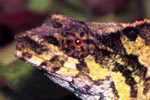
(11/25/2014) In just two forest patches may dwell a tiny, little-known chameleon that researchers have dubbed the world’s most endangered. Chapman’s pygmy chameleon from Malawi hasn’t been seen in 16 years. In that time, its habitat has been whittled down to an area about the size of just 100 American football fields.
Saving Myanmar’s red pandas by protecting land, educating people

(11/25/2014) Red pandas, bear-like arboreal mammals with red, furry tails, are poached mainly for their fur. Found primarily at higher elevation forests of the eastern Himalayas, these pandas spend most of their time in trees, and feed mainly on bamboo. But much of their forest habitat has been destroyed due to illegal logging.
Chameleon crisis: extinction threatens 36% of world’s chameleons

(11/24/2014) Chameleons are an unmistakable family of wonderfully bizarre reptiles. They sport long, shooting tongues; oddly-shaped horns or crests; and a prehensile tail like a monkey’s. But, chameleons are most known for their astonishing ability to change the color of their skin. Now, a update of the IUCN Red List finds that this unique group is facing a crisis that could send dozens of chameleons, if not more, to extinction.